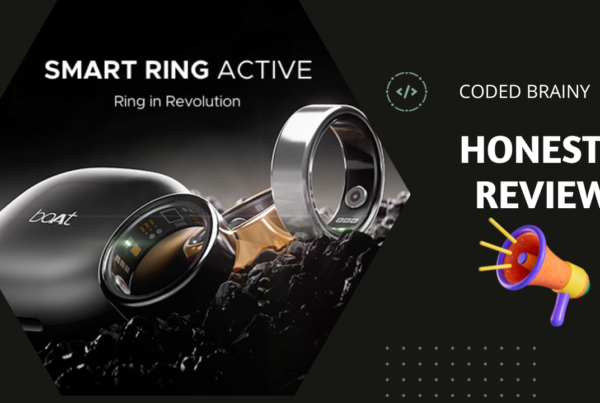As wearables continue to evolve, the Pi Ring emerges as a fascinating addition to the realm of smart technology, promising health monitoring features packed into a sleek, wearable ring. After a week of testing its capabilities, here’s my take on the Pi Ring.

First impressions matter, and the Pi Ring certainly catches the eye with its stainless steel outer and inner rings, giving it a modern and minimalist aesthetic. It feels lightweight on the finger, which is essential for something you’d wear throughout the day.
Below is a table outlining the functionality of the Pi Ring smart ring:
| Functionality | Description |
|---|---|
| Health Monitoring | Tracks skin temperature, heart rate, and blood oxygen levels. |
| Activity Monitoring | Records steps taken and calculates calories burned. |
| Water Resistance | IPX8 rating ensures protection against water immersion up to certain depths. |
| Compatibility | Compatible with iOS 13.6+ and Android 9+ devices. |
| Battery Life | Lasts approximately 1 day on a full charge, despite claimed 2-day lifespan. |
| Material | Constructed with stainless steel, offering durability and a sleek appearance. |
| Weight | Weighs 8 grams, providing lightweight wear throughout the day. |
| Charging | Fast charging feature ensures quick replenishment of battery. |
| App Subscription | Lifetime free |

However, the allure of the Pi Ring starts to dim when delving into its performance. The touted health monitoring functions including skin temperature, heart rate, and blood oxygen levels often fall short in accuracy. While blood oxygen readings are decent, heart rate and temperature measurements can sometimes be inconsistent, making it difficult to rely on for precise health tracking.
One of the most crucial aspects of any activity tracker is its step count accuracy. Unfortunately, the Pi Ring struggles in this department, occasionally displaying zero steps even after physical activity or showing an unrealistic count when traveling by vehicle. Such discrepancies raise questions about the reliability of its data.
Battery life, another pivotal factor, doesn’t quite live up to the promised two days. Despite a relatively fast charging time, the Pi Ring tends to run out of juice within a single day, necessitating more frequent charges than expected.
Navigating the Pi Ring’s app interface leaves much to be desired. While it provides access to data collected by the ring, its layout and usability could benefit from refinement. A more intuitive and user-friendly interface would greatly enhance the overall user experience.

Priced at Rs. 4,999, the Pi Ring falls within the mid-range category of smart wearables. For tech enthusiasts keen on exploring the latest gadgets, the Pi Ring offers an intriguing opportunity to test a novel form of wearable technology. However, for those seeking reliable health data, its current level of accuracy may not suffice
The verdict
The Pi Ring presents an innovative concept with potential, but it’s clear that there’s still work to be done in refining its accuracy and usability. As the technology continues to advance, future iterations of the Pi Ring could undoubtedly address these shortcomings, making it a more compelling option for health-conscious consumers.
Purchase Link: Pi Ring
Bookmark CodedBrainy, as next we have Gibit Ring for review








